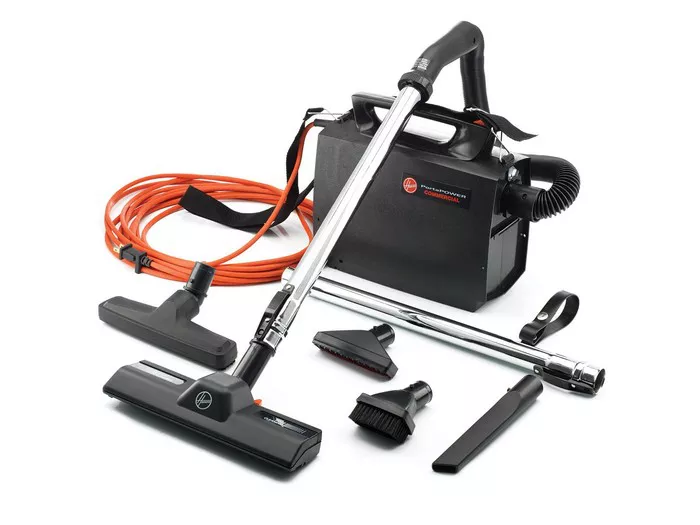Vacuum cleaners are essential tools for maintaining cleanliness and hygiene in our homes or workplaces. However, like any other appliance, they are susceptible to various issues that can affect their performance and longevity. Understanding these common problems and knowing how to address them can help users make the most out of their vacuum cleaners. In this article, we’ll explore the typical issues encountered with vacuum cleaners and provide practical solutions to overcome them.
Loss of Suction Power
Loss of suction power is a prevalent problem experienced by vacuum cleaner users. This issue can arise due to several reasons, including:
1. Clogged Filters: Over time, the filters in a vacuum cleaner can become clogged with dirt, dust, and debris, hindering airflow and reducing suction power. To resolve this issue, regularly clean or replace the filters according to the manufacturer’s recommendations.
2. Full Dustbin: An overflowing dustbin can restrict airflow and lead to loss of suction. Empty the dustbin regularly to prevent this problem and ensure optimal performance.
3. Blockages in Hose or Brush Roll: Blockages in the vacuum cleaner’s hose or brush roll can impede airflow and cause suction loss. Check these areas for any obstructions and remove them carefully.
Brush Roll Issues
The brush roll, also known as the beater bar or agitator, plays a crucial role in loosening dirt and debris from carpets and floors. Common problems associated with the brush roll include:
1. Tangled Hair, Threads, or Debris: Hair, threads, and other debris can wrap around the brush roll, causing it to stop spinning effectively. Regularly remove these obstructions to prevent damage to the brush roll and ensure efficient cleaning.
2. Worn-out Brush Roll: Over time, the brush roll may become worn-out or damaged, affecting its performance. Inspect the brush roll regularly and replace it if necessary to maintain optimal cleaning results.
Clogging
Clogs can occur in various parts of the vacuum cleaner, including the hose, wand, or other attachments. Common causes of clogs include:
1. Large Debris: Vacuuming up large debris that cannot pass through the hose or wand can lead to clogs. Avoid vacuuming up objects that are too big for the vacuum cleaner to handle.
2. Accumulated Dirt and Dust: Dirt, dust, and other particles can accumulate inside the vacuum cleaner’s components over time, leading to clogs. Regular maintenance and cleaning can help prevent clogs from occurring.
Faulty Belts
The belt in a vacuum cleaner is responsible for driving the brush roll. When the belt becomes worn-out or broken, it can cause the brush roll to stop rotating properly, resulting in inefficient cleaning. Signs of a faulty belt include:
1. Brush Roll Not Spinning: If the brush roll is not spinning while the vacuum cleaner is in operation, it may indicate a worn-out or broken belt.
2. Strange Smell or Noise: A burning smell or unusual noise coming from the vacuum cleaner may also indicate belt issues.
Unpleasant Odors
Foul smells emanating from the vacuum cleaner can be unpleasant and indicate underlying issues. Common causes of odors include:
1. Trapped Dirt and Debris: Dirt and debris trapped inside the vacuum cleaner can produce foul odors over time. Empty the dustbin regularly and clean the vacuum cleaner’s components to eliminate trapped dirt and debris.
2. Mold and Bacteria: Moisture buildup inside the vacuum cleaner can promote the growth of mold and bacteria, leading to unpleasant odors. Clean and disinfect the vacuum cleaner regularly to prevent mold and bacteria growth.
Overheating
Vacuum cleaners can overheat due to various reasons, including blockages in the airflow or a malfunctioning motor. Signs of overheating include:
1. Hot Exterior: If the exterior of the vacuum cleaner feels excessively hot to the touch during operation, it may indicate overheating.
2. Automatic Shutdown: Some vacuum cleaners are equipped with thermal protection mechanisms that automatically shut off the motor if it overheats.
Loud or Unusual Noises
Strange noises during vacuuming can be alarming and indicate potential issues with the vacuum cleaner’s internal components. Common causes of loud or unusual noises include:
1. Motor Issues: Problems with the motor, such as worn-out bearings or loose components, can cause loud or unusual noises during operation.
2. Internal Damage: Damage to internal components, such as the fan or impeller, can also result in loud or unusual noises.
Poor Maneuverability or Mobility
Poor maneuverability or mobility can make vacuuming a challenging and frustrating task. Common factors contributing to this issue include:
1. Stiff Wheels: Wheels that are stiff or difficult to maneuver can hinder the vacuum cleaner’s movement. Lubricate or replace the wheels as needed to improve maneuverability.
2. Tangled Cords: Tangled cords can impede the vacuum cleaner’s movement and pose a tripping hazard. Keep cords organized and untangled to ensure smoother operation.
Short Lifespan
Premature failure of vacuum cleaners can be attributed to various factors, including:
1. Inadequate Maintenance: Neglecting regular maintenance, such as cleaning filters and emptying the dustbin, can accelerate wear and tear on the vacuum cleaner’s components, leading to premature failure.
2. Low-Quality Materials: Vacuum cleaners made from low-quality materials may be more prone to breakage and failure compared to those made from durable materials.
Manufacturer-Specific Issues
Some vacuum cleaner brands or models may have known issues or recalls associated with them. It’s essential to stay informed about any manufacturer-specific issues and follow the manufacturer’s recommendations for addressing them.
Conclusion
In conclusion, understanding the common problems of vacuum cleaners and knowing how to troubleshoot and resolve them can help users maximize the performance and lifespan of their appliances. By following the tips provided in this article, users can ensure that their vacuum cleaners operate efficiently and effectively for years to come. If you encounter persistent issues or require professional assistance, don’t hesitate to contact a qualified technician or the manufacturer for support.

